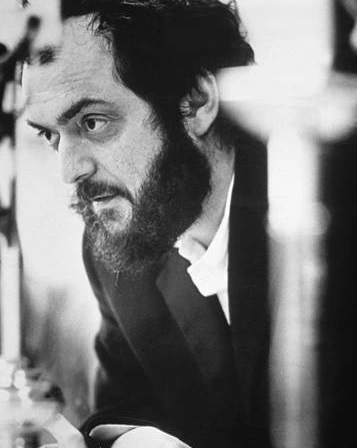Stanley Kubrick Stanley Kubrick (1928-1999), American motion-picture director, many of whose films explore the dark side of human nature.
Publié le 12/05/2013

Extrait du document

Stanley Kubrick Stanley Kubrick (1928-1999), American motion-picture director, many of whose films explore the dark side of human nature. Kubrick, who made 13 feature films over his nearly 50-year career, is considered one of the great directors of the 20th century. Kubrick was born in the Bronx, New York. He became interested in photography in high school and at age 16 sold a photograph to Look magazine. In 1946 he briefly attended City College of New York (CCNY) and then left to join the Look staff as a photographer. By the time Kubrick was 21, he had started making motion pictures. He bought a newsreel camera and with the help of a friend shot The Day of the Fight (1951), a 15-minute documentary bought by RKO Pathé News. The company then backed Kubrick to make the short documentary Flying Padre (1951). In 1953 he made his first feature-length film, Fear and Desire (1953). It was a commercial failure, but received some critical acclaim. His next two films, Killer's Kiss (1955) and The Killing (1956), were similarly received. Kubrick's breakthrough film was Paths of Glory (1957), an antiwar movie set during World War I (1914-1918) and starring Kirk Douglas. As Kubrick's other early films had, Paths of Glory portrayed violence in vivid detail. It won the Grand Prix de la Critique in Brussels, Belgium, in 1959. Kubrick's next project was Spartacus (1960), a dramatization of the life of the Roman slave Spartacus, who led a slave rebellion in 73 BC. The film was a box-office smash that starred Kirk Douglas, Laurence Olivier, Jean Simmons, Tony Curtis, Charles Laughton, Peter Ustinov, and John Gavin. Kubrick followed it with Lolita (1962), based on the novel by Russian-American author Vladimir Nabokov; and Dr. Strangelove or: How I Learned to Stop Worrying and Love the Bomb (1964), a dark comedy about Cold War paranoia and the nuclear arms race. The dramatic visual look of Kubrick's 2001: A Space Odyssey (1968) helped renew interest in special effects in the movies. A Clockwork Orange (1971), from the novel by British writer Anthony Burgess, was criticized for its extreme violence. Kubrick's next three films were Barry Lyndon (1975), which was set in the 18th century; The Shining (1980), which starred Jack Nicholson as the caretaker of a Colorado resort who goes insane; and Full Metal Jacket (1987), about the Vietnam War (1959-1975). In 1991 Spartacus reappeared in movie theaters, newly edited to restore many scenes that had been cut from the 1960 version because of graphic violence and sex. Kubrick died shortly after completing his final film, the thriller Eyes Wide Shut (1999). Microsoft ® Encarta ® 2009. © 1993-2008 Microsoft Corporation. All rights reserved.
Liens utiles
- Billy Wilder Billy Wilder (1906-2002), American motion-picture director, writer, and producer, whose best films--usually comedies--employ his distinctive dialogue to elucidate a darkly satirical view of human nature.
- Martin Scorsese Martin Scorsese, born in 1942, American motion-picture director, whose best films have reflected the Italian American experience of his childhood in New York City's Little Italy neighborhood.
- Woody Allen Woody Allen, born in 1935, American motion-picture director, actor, and writer, many of whose films are humorous depictions of neurotic characters preoccupied with love and death.
- John Huston John Huston (1906-1987), American motion-picture director and actor, who created some of the most critically acclaimed films of American cinema in his long and distinguished career.
- 2001: A Space Odyssey 2001: A Space Odyssey, science-fiction motion picture about extraterrestrial life, human evolution, and technology, directed by Stanley Kubrick and released in 1968.









